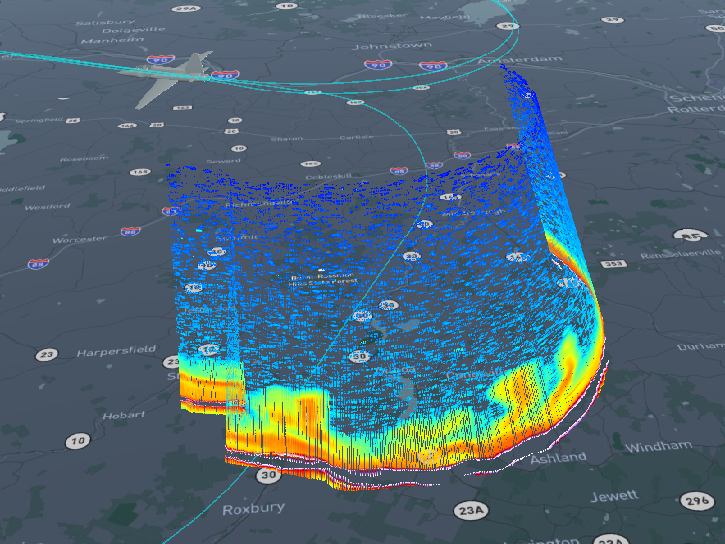Access a range of datasets and data tools to further your lightning research.
Lightning is the electrical discharge in the atmosphere that can occur between clouds, ground, or into the air itself. The atmosphere is an insulator between positively and negatively charged regions within clouds or between clouds and the ground. When enough charge is built up, the atmosphere's insulating capacity is overcome and a rapid electrical discharge occurs, which results in the lightning flash. The bright flash of light that we observe is the return stroke and is one of the last events to occur in the lifecycle of a lightning flash. This return stroke can have a temperature on the order of 30,000 degrees Celsius. This extreme heat rapidly expands the air around it, creating the shock wave that produces thunder.
More than 2,000 thunderstorms are active throughout the world at a given moment. NASA's space-based lightning observation platforms, such as the Optical Transient Detector (OTD) and the Lightning Imaging Sensors (LIS), have been critical to improving our understanding of how much lightning occurs globally. Studies now support that the global per-second flash rate ranges from 35 flashes per second during the Northern hemisphere winter to 55 flashes per second during the Northern hemisphere summer.
Understanding lightning activity and occurrence has many benefits. First is lightning safety. Each year, lightning is responsible for about 24,000 deaths and 240,000 injuries. Lightning is also responsible for millions of dollars in property damage per year in addition to losses from work stoppages. Lightning research aims to improve lightning safety as well as develop improved lightning safety protocols that require less down time but still assure safety, whether at an outdoor event, during airport operations, or at a NASA launchpad.
The impacts of lightning research extend far beyond safety. Lightning observations provide insight into thunderstorms that enable the inference of a thunderstorm's strength. This can be used for operational decision support to determine which storms to more closely monitor to help determine if a warning should be issued for a severe thunderstorm. Space-based and long-range lightning observations provide details on thunderstorms in remote locations, such as over the oceans or in other areas that lack radar. This can inform flight track positioning to identify locations that may be experiencing heavy precipitation.
Lightning research has come a long way in the past few decades. Looking back at Space Shuttle lightning experiments in the 1980s, we now have a better understanding of why lightning occurs and where, what lightning patterns exist over the globe, and what lightning tells us about atmospheric convection. Most ground-based and airborne lightning sensors are only capable of detecting cloud-to-ground lightning, which is known to make up only about 25% of all lightning activity (intra-cloud lightning is the most common type of discharge). With the use of space-based lightning sensors, we can now measure all forms of lightning over both land and sea, 24 hours a day.
The primary objectives of lightning study include determining the relationship between the electrical characteristics of storms and precipitation, convection, and severe weather. NASA also has an interest in pursuing lightning research for its own operations — lightning strikes that hit spacecraft can cause severe hazards, such as during the 1969 launch of the Apollo 12 mission, when lightning briefly knocked out vital spacecraft electronics. Fortunately, the astronauts regained control.
NASA’s archives contain near real-time and historical lightning data from around the globe from a variety of platforms. This includes highly detailed, but short-ranged lightning mapping arrays derived from LIS. These data are open and available to researchers worldwide, resulting in numerous advancements in the field of atmospheric science.
Learn How to Use Lightning Data



Join Our Community of NASA Data Users
While NASA data are openly available without restriction, an Earthdata Login is required to download data and to use some tools with full functionality.
Learn About the Benefits of Earthdata LoginFrequently Asked Questions
Earthdata Forum
Our online forum provides a space for users to browse thousands of FAQs about research needs, data, and data applications. You can also submit new questions for our experts to answer.
Submit Questions to Earthdata Forumand View Expert Responses